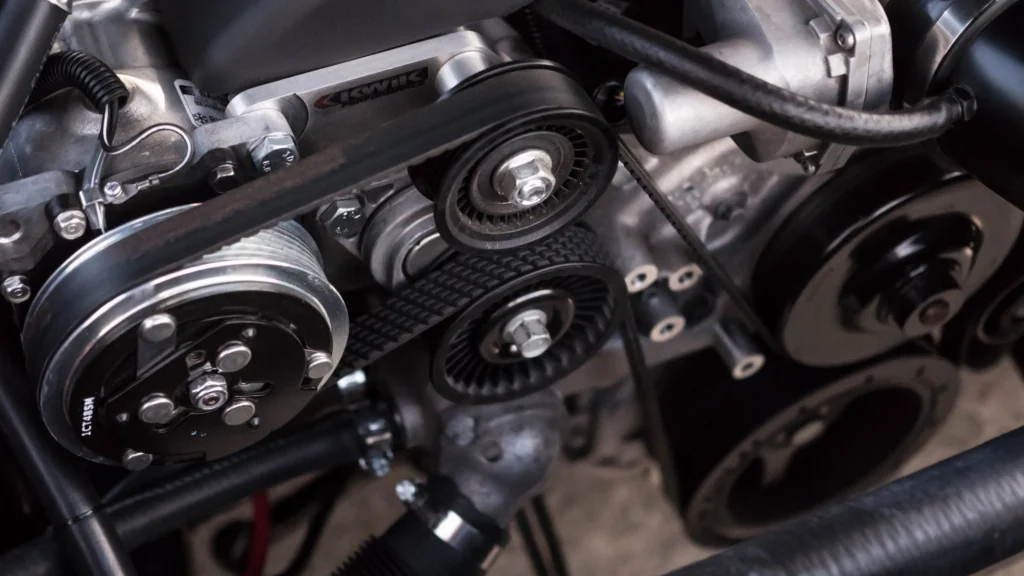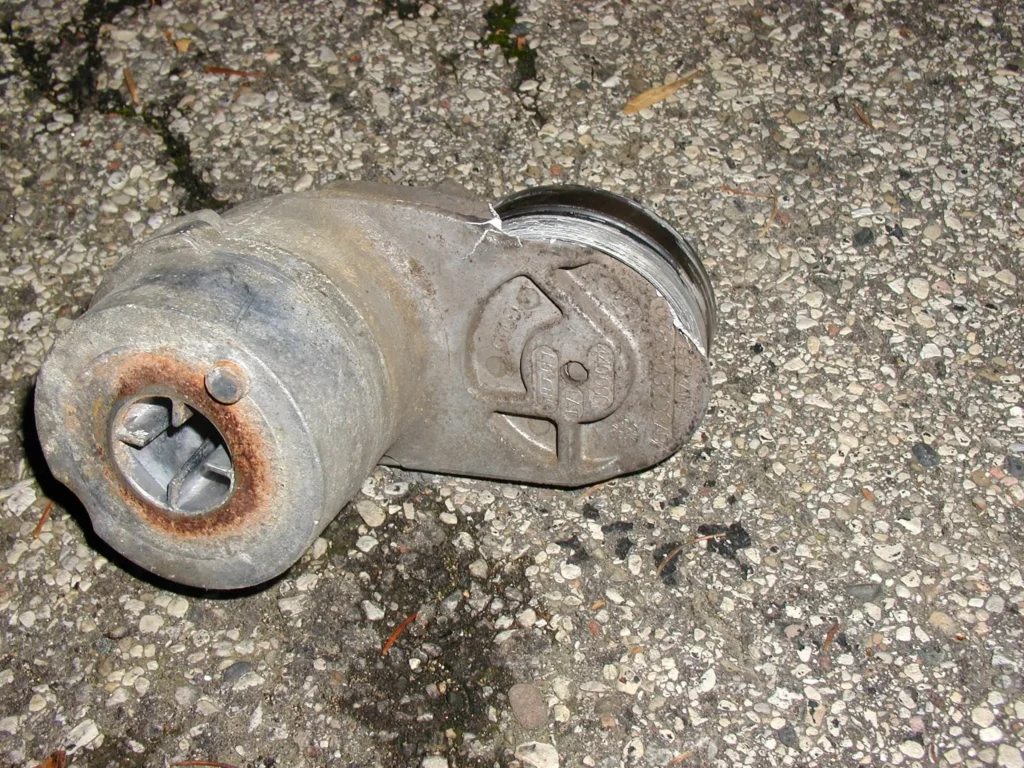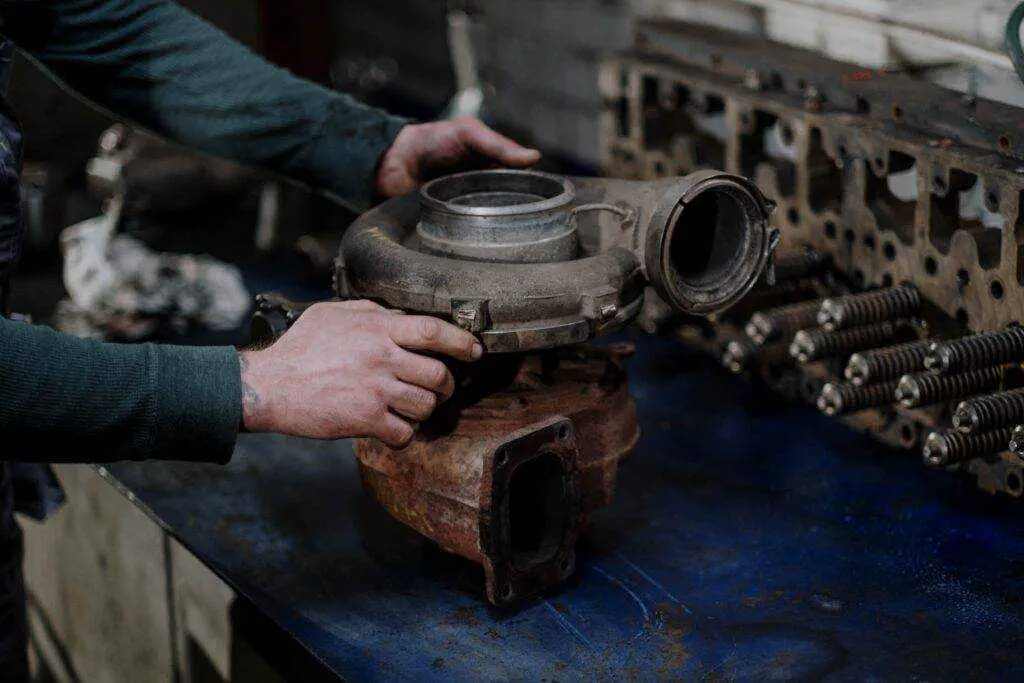If your engine has been experiencing an unsettling rough idle, accompanied by vibrations that make you feel like you’re riding on a bucking bronco, it’s time to investigate the potential culprit: the oft-overlooked belt tensioner. This unassuming component plays a critical role in ensuring the smooth operation of your vehicle’s engine, and when it fails, the consequences can be far-reaching.
What is a Belt Tensioner?
Before we dive into the heart of the matter, let’s first understand what a belt tensioner is and why it’s so vital. Imagine your car’s engine as an intricate symphony, with various components working in perfect harmony to create a melodious performance. The belt tensioner acts as the conductor, ensuring that the timing belt (or serpentine belt) remains taut and in sync, allowing the crankshaft, camshaft, and other essential parts to operate in perfect synchronization.

There are two main types of belt tensioners:
- Automatic Tensioners: These use spring tension that automatically adjusts as the belt stretches over time, maintaining proper tension.
- Manual Tensioners: These require periodic manual adjustment as the belt wears and loosens, to keep the tension at the recommended level.
The belt tensioner applies constant pressure to the belt, preventing it from becoming loose or slipping off the pulleys. It’s a simple yet ingenious mechanism that maintains the delicate balance within your engine’s inner workings.
Can a Bad Belt Tensioner Cause Rough Idle?
Now, let’s address the million-dollar question: Can a bad belt tensioner cause rough idle? The answer is a resounding yes! When the belt tensioner fails to do its job effectively, it can wreak havoc on your engine’s performance, leading to a rough and unsettling idle experience.
Here’s how a faulty belt tensioner can contribute to a rough idle:
- Accessory Drag: As the belt tensioner loses its grip, the belts can start to slip on the pulleys, causing accessories like the alternator, water pump, and air conditioning compressor to work harder than they should. This additional drag on the engine can lead to roughness and vibrations, especially at idle.
- Incorrect Timing: In the case of a timing belt, a loose or failing tensioner can throw off the precise timing between the crankshaft and camshaft, leading to misfires, reduced engine efficiency, and, you guessed it, a rough idle. This improper valve timing can also cause loss of power and reduced fuel economy.
- Imbalanced Rotating Assembly: When the belt tensioner is unable to maintain proper tension, the belts can wobble and pulsate instead of running smoothly. This imbalance gets transmitted to the crankshaft, creating vibrations that are most noticeable at idle when engine loads are lightest. Severe imbalance can even lead to engine damage over time.
- Alternator Issues: A loose serpentine belt due to a failing tensioner can cause the alternator to spin erratically, leading to charging system problems. This can result in a weak battery, causing issues with ignition timing and contributing to a rough idle.
Signs of a Failing Belt Tensioner
Now that we understand the connection between a bad belt tensioner and rough idle, let’s explore some telltale signs that your tensioner might be on its last legs:
- Squealing or Chirping Noises: If you hear high-pitched noises coming from under the hood, especially when accelerating or turning, it could be a sign that the belt is slipping due to insufficient tension.
- Frayed or Cracked Belts: A visual inspection of the belts may reveal fraying, cracking, or excessive wear, which can be a direct result of a failing tensioner not maintaining proper tension.
- Battery or Charging Issues: If the serpentine belt is loose, it can prevent the alternator from spinning properly, leading to a drained battery or charging system problems indicated by a warning light on the dash.
- Reduced Accessory Performance: A slipping belt can cause reduced power steering assist, making the steering feel heavy or difficult to turn. It can also lead to weak air conditioning output or even engine overheating due to a malfunctioning water pump.
- Oil Leaks: In some cases, a faulty tensioner can lead to oil leaks in the vicinity of the tensioner itself, which is a clear sign that it needs to be replaced. Leaking oil can also contaminate the belt, leading to premature wear.
- Physical Damage: Inspecting the tensioner itself may reveal signs of physical damage, such as cracks, grooves, or excessive wear on the pulley surface. This can be an indicator of imminent failure.
Diagnosing a Bad Tensioner
While the above symptoms can point to a potential tensioner issue, it’s essential to have a professional mechanic perform a thorough diagnosis to rule out other potential causes. Here are some diagnostic steps they may take:
- Visual Inspection: A detailed visual inspection of the belt tensioner, belts, and related components can often reveal obvious signs of wear or damage.
- Belt Tension Check: Using specialized tools, the mechanic can measure the actual tension on the belts to determine if it falls within the manufacturer’s recommended range.
- Tensioner Operation Test: The mechanic may start the engine and observe the tensioner’s operation, checking for smooth movement and proper tension adjustment.
- Pulley Rotation Check: A stuck or seized tensioner pulley can also lead to belt slippage and rough idle. The mechanic can check for smooth rotation and bearing condition.
- Diagnostic Trouble Codes: In some cases, a faulty tensioner can trigger trouble codes related to misfires, timing issues, or charging system problems, which can be read using a diagnostic scanner.


Don’t Ignore the Signs
While a rough idle can have various causes, it’s essential not to overlook the potential role of a bad belt tensioner. Ignoring the warning signs can lead to more severe issues, such as complete belt failure, which can result in costly repairs or even catastrophic engine damage in some cases.
For example, on interference engines (where the valves and pistons share the same space), a broken timing belt can lead to valve-to-piston contact, potentially causing bent valves, damaged pistons, and requiring an expensive engine rebuild or replacement.
Even with non-interference engines, a broken serpentine belt can lead to overheating, alternator failure, and other issues that can leave you stranded on the side of the road.
If you suspect that your belt tensioner might be the culprit behind your engine’s rough idle, it’s best to have it inspected and replaced by a professional mechanic as soon as possible. They have the expertise and tools to diagnose the issue accurately and ensure that your engine’s symphony continues to play smoothly.
Maintenance and Replacement
Like any other component, belt tensioners have a limited lifespan and will eventually need to be replaced as part of regular maintenance. Most manufacturers recommend inspecting and potentially replacing the tensioner(s) every 60,000 to 100,000 miles, or according to the specific maintenance schedule for your vehicle.
It’s also important to note that when replacing a timing belt or serpentine belt, it’s generally recommended to replace the tensioner(s) at the same time. This ensures that the new belt is properly tensioned and reduces the risk of premature failure due to a worn tensioner.
Conclusion
In the intricate symphony that is your vehicle’s engine, the belt tensioner acts as the unsung hero, ensuring that the timing belt (or serpentine belt) remains in perfect harmony with the rest of the components. When this vital component fails, it can cause a rough idle, vibrations, and a host of other issues that can disrupt the melodious performance of your engine.
By understanding the connection between a bad belt tensioner and rough idle, being vigilant for the warning signs, and addressing the issue promptly, you can prevent more severe and costly problems down the line. Remember, a well-maintained engine is a happy engine, and a happy engine means a smooth, enjoyable driving experience for you.
So, the next time you encounter a rough idle, don’t dismiss it as a minor annoyance. Instead, consider the unsung hero that is the belt tensioner, and take the necessary steps to restore harmony to your engine’s performance. Your car (and your wallet) will thank you.





